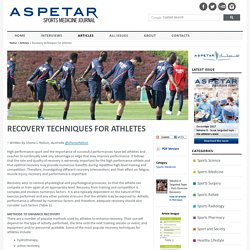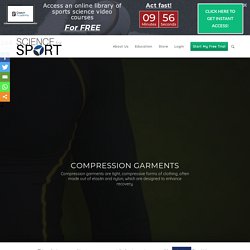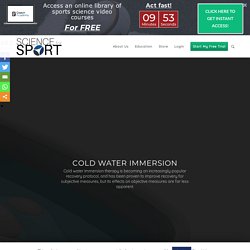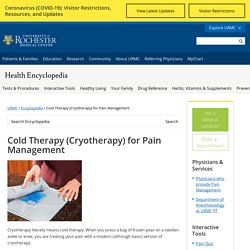

Athletes and Recovery Techniques. Socceroos: The high-tech sleep aids they're using to combat jet lag. Updated Media player: "Space" to play, "M" to mute, "left" and "right" to seek.

Error loading player: No playable sources found Audio: Rebooting your body clock with jet lag goggles (Blueprint for Living) They look like something from a sci-fi film, but these anti-fatigue glasses tackle a very earthly problem. "Re-Timer" specs are designed to combat jet lag in travellers moving across multiple time zones.
Many of the Socceroos wore them on the flight home from Honduras following their 0-0 draw in the first leg of their do-or-die World Cup qualifier. Developed by researchers at Adelaide's Flinders University, the glasses shine glowing green-blue light into the eye of the wearer to help manipulate their production of melatonin — the hormone the body uses to induce sleep. A study by Dr Helen Wright found that green-blue light was more effective at suppressing melatonin than the broad-spectrum wide light used in earlier products. Sleep relief on the go Backed by experts "They do help. Aspetar Sports Medicine Journal - Recovery techniques for athletes.
– Written by Shona L Halson, Australia High performance sport and the importance of successful performances have led athletes and coaches to continually seek any advantage or edge that may improve performance.

It follows that the rate and quality of recovery is extremely important for the high performance athlete and that optimal recovery may provide numerous benefits during repetitive high-level training and competition. Therefore, investigating different recovery interventions and their effect on fatigue, muscle injury, recovery and performance is important.
Recovery aims to restore physiological and psychological processes, so that the athlete can compete or train again at an appropriate level. Recovery from training and competition is complex and involves numerous factors. There are a number of popular methods used by athletes to enhance recovery. Hydrotherapy, active recovery, stretching, compression garments, massage, sleep and nutrition. Background Sleep deprivation Australia. Compression Garments. Do Compression Garments improve recovery and enhance performance?

Effects on Inflammatory Response The effects of DOMS following strenuous exercise are very well-documented, however, the primary mechanism responsible for this phenomena is still not fully understood. Whilst some believe that DOMS results from the disruption of muscle fibres and surrounding tissues (2), others believe that it is associated with the inflammatory response (3). Perhaps the most realistic theory is that it is actually a combination of both the disruption of the muscle fibres and their surrounding tissues and the effects associated with the inflammatory response (4).
The inflammatory response is a process which follows tissue damage caused by strenuous activity. Effects on Creatine Kinase In addition to alleged effects of compression garments on inflammatory responses, their impact on the attenuation of creatine kinase has also been substantially explored. Effects on Cardiovascular Function. Whole-body cooling cryotherapy: empirical evidence and theoretical perspectives.
Cold Water Immersion. How does Cold Water Immersion improve recovery?

Despite there being an abundance of research on CWI, the primary mechanisms for its ability to improve recovery are still not fully understood. However, the following theories have been suggested: Vasoconstriction (blood vessel constriction).Analgesic (pain relieving) effect of the cold water.Reducing inflammatory pathways.Placebo effect.Hydrostatic pressure. Vasoconstriction One theory suggests that the immersion into cold water causes vasoconstriction, leading to lower localised blood flow (5).
Analgesic effects of the cold water The second theory postulates that the reduced perception of pain is due to the analgesic effect of the cold water. Reducing inflammatory pathways Others have suggested that the decrease in the perception of pain is related to reduced inflammatory pathways – namely: reduced nociceptor sensitisation (12), reduced exercise-induced oedema (13), and reduced white blood cell access (2, 14). Placebo effect. Contrast bathing a brief summary of the evidence. Contrast water therapy & post-match recovery: manual guide.
Ice for Pain Management - Health Encyclopedia. Cryotherapy literally means cold therapy.

When you press a bag of frozen peas on a swollen ankle or knee, you are treating your pain with a modern (although basic) version of cryotherapy. Cold therapy can be applied in various ways, including ice packs, coolant sprays, ice massage, and whirlpools, or ice baths. When used to treat injuries at home, cold therapy refers to cold therapy with ice or gel packs that are usually kept in the freezer until needed. These remain one of the simplest, time-tested remedies for managing pain and swelling.
Using cold therapy Cold therapy is the "I" component of R.I.C.E. Ice in patient management. The use of cryotherapy in sports injuries. - PubMed - NCBI. Cold applications for recovery in adolescent athletes: a systematic review and meta analysis. Are athletes really getting faster, better, stronger? (5) How much exercise is too much? (5) What Too Much Exercise Does To Your Body And Brain. What would happen if you didn’t drink water? - Mia Nacamulli. Electrolyte drinks that match how YOU sweat by Precision Hydration.